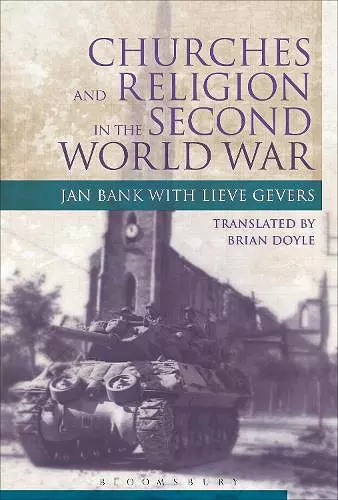Churches and Religion in the Second World War
Jan Bank author Lieve Gevers author
Format:Paperback
Publisher:Bloomsbury Publishing PLC
Published:24th Mar '16
Should be back in stock very soon

A study of Christian religions and churches in Europe at the time of the Second World War.
Despite the wealth of historical literature on the Second World War, the subject of religion and churches in occupied Europe has been undervalued – until now. This critical European history is unique in delivering a rich and detailed analysis of churches and religion during the Second World War, looking at the Christian religions of occupied Europe: Catholicism, Lutheranism, Calvinism, and Orthodoxy.
The authors engage with key themes such as relations between religious institutions and the occupying forces; religion as a key factor in national identity and resistance; theological answers to the Fascist and National Socialist ideologies, especially in terms of the persecution of the Jews; Christians as bystanders or protectors in the Holocaust; and religious life during the war. Churches and Religion in the Second World War will be of great value to students and scholars of European history, the Second World War and religion and theology.
Never before has a volume provided a synoptic narrative of church activities across the continent, from France to the Soviet Union, during the war years. With erudition and sensitivity, Bank and Gevers tell the stories of the many churches scattered across Europe, and how they mobilized the Christian message of peace, or failed to, in an era of total war. * Journal of Modern History *
This massive study surveys the secondary literature to develop a portrait of how the Christian churches of occupied Europe responded to one of the most brutal episodes in human history. The authors focus on how the Christian churches in the “totalitarian zone”—Nazi-, Fascist-, and Soviet-controlled territory—experienced the period 1919–1945. How did the churches interact with these regimes? To what extent did their role as “bulwarks” of the nation influence their reaction to total war? Central to the volume is the churches’ response to genocide. The result is a balanced account. The secondary literature the authors surveyed includes both accusatory and exculpatory assessments of the role of the major Christian churches (Roman Catholic, Eastern Orthodox, and Protestant) in both Nazi and Soviet atrocities. Two common themes emerge: the churches’ first priority was to protect their own members; the fear that speaking out would only worsen the situation. …[T]he work will serve as a solid compendium of information on the Christian response to the greatest challenge the faith has faced since the Edict of Toleration. For history and religious studies collections. Summing Up: Highly recommended. All academic levels/libraries. * CHOICE *
[The authors] provide a broad overview of the position of churches and Christians during the Second World War ... They work with a truly interdenominational and international perspective. (Bloomsbury translation) * Historische Zeitschrift *
Because this book is the first to provide a general history of the churches during World War II and is so comprehensive and generally reliable in its selection and interpretation, it is an essential book for church historians, historians of World War II, and academic libraries. * European History Quarterly *
This important book provided the first genuinely Europe-wide account of the actions of the European Christian churches during the Second World War. It is essential reading for understanding the war, but also the role that the churches have played in twentieth-century European history. * Martin Conway, University of Oxford, UK *
Jan Bank and Lieve Gievers have provided a valuable summary of the secondary literature about the role of religion and churches during World War II. Anti-Semitism already pervaded both Catholic and Protestant theology, but the virtual identification of religion and nationalism led to violent anti-Semitism and even the “Final Solution.” In Germany, there arose a form of idolatry of the state and its leader, Hitler. In Eastern Europe, Josef Stalin appealed to Russian nationalism by removing restrictions on the Russian Orthodox Church. His ultimate plan was to subsume all branches of the Orthodox Church in Eastern Europe under Moscow and create a second Vatican. But to be Russian and Orthodox meant also to be anti-Semitic. The authors also note postwar continuity with wartime activity, such as ecumenism in the Netherlands stemming from the cooperation between the Dutch bishops and their Protestant counterparts and growing attention to the United States. * Gerald P. Fogarty, University of Virginia, USA *
ISBN: 9781845208226
Dimensions: 234mm x 158mm x 36mm
Weight: 960g
624 pages